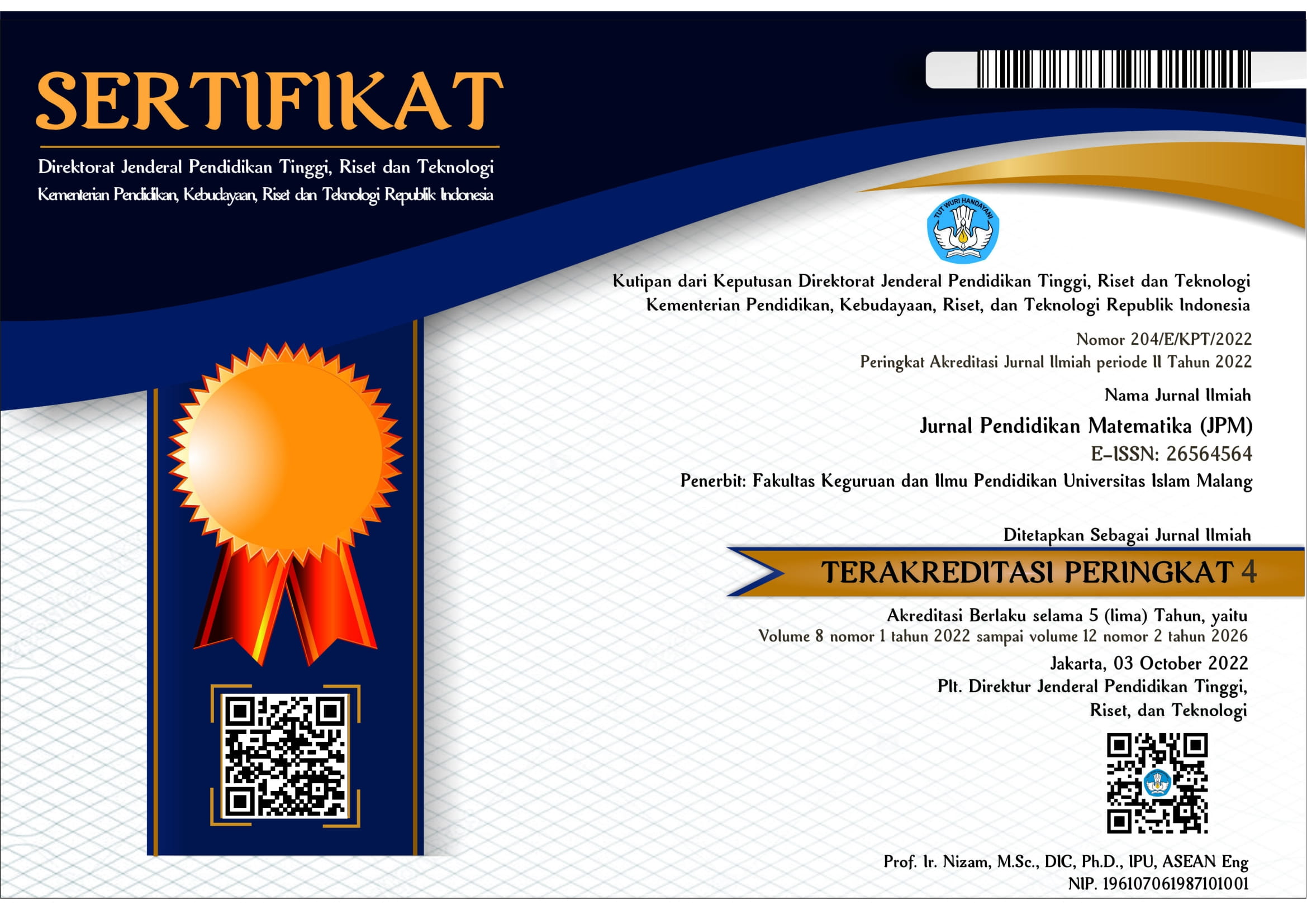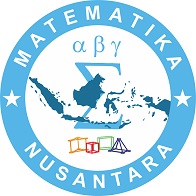PEER REVIEW PROCESS
Jurnal Pendidikan Matematika (JPM) is a journal published by the Mathematics Education study program, Teacher Training and Education Faculty, Islamic University of Malang. The research article submitted to this online journal will be peer-reviewed with a double-blind review process by two reviewers. The accepted research articles will be available online (free download) following the journal peer-reviewing process. The final decision on article acceptance will be made by the Editors according to the Reviewers' comments. Plagiarism detection of articles in this journal is carried out by using turnitin.com languages used in this journal are English and Bahasa Indonesia.
The peer review at JPM proceeds in 7 steps with the description as follows.
1. Submission of Paper
When the author wants to submit their manuscript, this is carried out via an online system supported by the Open Journal System (OJS). But to facilitate authors, JPM also accepts paper submissions by email.
2. Editorial Office Assessment
The submitted paper is first assessed by the Editor in Chief. The Editor-in-Chief (EIC) checks if the manuscript is appropriate, sufficiently original, interesting, and significant for publication. If not, the manuscript may be rejected without being reviewed any further. The Editor in Chief will assign the editor to check whether it is suitable for JPM’s focus and scope. The manuscript’s composition and arrangement are evaluated against the journal’s Author Guidelines to make sure it includes the required sections and stylizations. Every submitted manuscript that passes this step will be checked by Turnitin to identify any plagiarism before being reviewed by reviewers.
3. Invitation to Reviewers
The handling editor sends invitations to individuals who he or she believes would be appropriate reviewers based on expertise, closeness of research interest, and no conflict of interest consideration. The peer review process at JPM involves a community of experts in a narrowly defined field of mathematics education who are qualified and able to perform reasonably impartial reviews. The impartiality is also maintained by the double-blind peer review employed in this journal. So, the reviewer does not know the author’s identity, The manuscript is sent to two reviewers chosen by the Editor.
4. Response to Invitations
Potential reviewers consider the invitation against their expertise, conflicts of interest, and availability. They then decide to accept or decline. In the invitation letter, the editor may ask the potential reviewer for suggestions of alternative reviewers, when he or she declines to review.
5. Review is Conducted
The reviewer allocates time to read the paper several times. The first read is used to form an initial impression of the work. If major problems are found at this stage, the reviewer may feel comfortable rejecting the paper without further work. Otherwise, they will read the paper several more times, taking notes to build a detailed point-by-point review in Review form. The review is then submitted to the journal, with a recommendation to accept, or reject it, or else with a revision request (usually flagged as either major or minor) before it is reconsidered.
6. The Decision
The editor sends a decision email to the author including any relevant reviewer comments. Reviewers' comments are sent anonymously to the corresponding author to take the necessary actions and responses. At this point, reviewers are also sent an email or letter letting them know the outcome of their review.
7. Final Steps
If accepted, the manuscript is sent to production. If the manuscript is rejected or sent back to the author for either major or minor revision, the section editor will include constructive comments from the reviewers to help the author improve the article. The author should make corrections and revise the paper per the reviewers’ comments and instructions.
After revision has been made, the author should resubmit the revised manuscript to the editor supplemented with a cover page containing a checklist that declares points of correction and revision that have been made.
If the manuscript was sent back for revision, the reviewers should expect to receive the revised version, unless they have opted out of further participation. However, where only minor changes were requested this follow-up review might be done by the section editor.
If the editor is happy with the revised manuscript, it is considered to be accepted. The accepted manuscript will be published online and all are freely available as downloadable PDF files (Fully open access to download the full paper).





_-_Copy.jpg)
.jpg)
.jpg)










